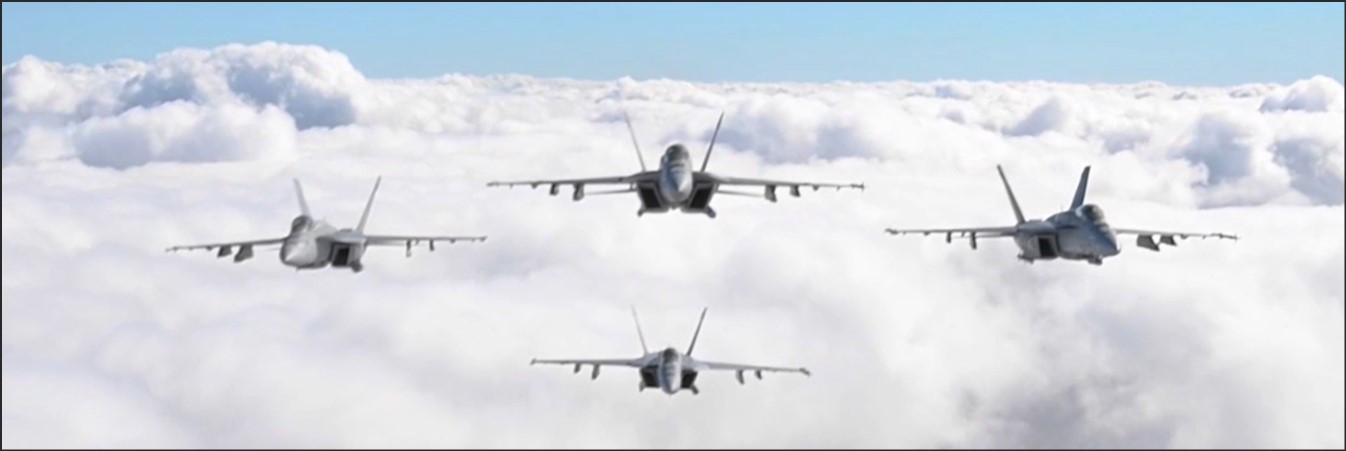
Raytheon Technologies manufactures components of the Boeing F/A-18 “Super Hornet” multi-mission strike fighter aircraft featured in “Top Gun: Maverick”
by James A. Bacon
Waltham, Mass.-based Raytheon Technologies has announced that it will establish its global headquarters in Arlington. Following the recent decision of The Boeing Company to relocate its headquarters from Chicago to Arlington, the move cements Northern Virginia’s standing as the leading defense/aerospace cluster in the United States.
“The location increases agility in supporting U.S. government and commercial aerospace customers and serves to reinforce partnerships that will progress innovative technologies to advance the industry,” stated the company in a brief press release. “Washington, D.C. serves as a convenient travel hub for the company’s global customers and employees.”
The announcement was unusual for not emanating from the governor’s office, as would be typical with news of this magnitude. It contained no quotes from Governor Glenn Youngkin, Arlington officials, or Virginia’s economic development officials; no citation of the number of jobs created (if any); and no mention of how much the company will invest in making the transition. However, the press release did make a point of saying, “Raytheon Technologies has not accepted or sought any financial incentives from any state or municipality to support the establishment of the global headquarters office in Virginia.”
The global headquarters will be located in Arlington’s Rosslyn business district, just across the Potomac River from Washington, D.C., alongside Raytheon’s existing intelligence and space business. Raytheon ranked 58th in the list of Fortune 500 companies.
Raytheon joins not only Boeing but General Dynamics and Northrop Grumman, both headquartered in Falls Church, among the large, integrated defense contractors located in Washington’s Virginia suburbs. Northern Virginia is also home to a host of smaller companies engaged in the defense and the related space, intelligence and homeland security sectors. Due to arcane federal procurement rules and heightened concerns about security, doing business with the Department of Defense and other agencies has engendered a unique business culture found nowhere else.
Unstated in the press release is that the move will put Raytheon’s top brass in close proximity to the Pentagon, NASA, various regulatory agencies and Congress, as well as a deep labor pool of consultants, technicians, IT specialists and others with defense-sector backgrounds and security clearances.
Fighter jets and other weapons platforms rely increasingly upon digital technologies to integrate the ability to detect threats, guide precision missiles, and penetrate the enemy’s electronic counter-measures. More than ever, weapons systems are imbued with Artificial Intelligence to accelerate decision-making loops which allow drones, missiles and other weapons to operate autonomously.
Two examples from Raytheon’s website illustrate how much technology is embedded in weapons today:
The AN/ALR-67(V)3 digital radar warning receiver tells pilots when danger is near. It detects emitters in high-pulse density and intercepts faint, distant signals despite interference from strong nearby transmitters. Raytheon Intelligence & Space is developing scalable, all-digital variants.
The Advanced Targeting Forward Looking Infrared, or ATFLIR, uses electro-optical sensors, infrared sensors and a powerful laser to locate and designate targets day and night, at ranges exceeding 40 nautical miles and altitudes surpassing 50,000 feet.
Military technology is “mission critical” in a way that commercial technology is not — lives depend upon it working correctly the first time, every time.


